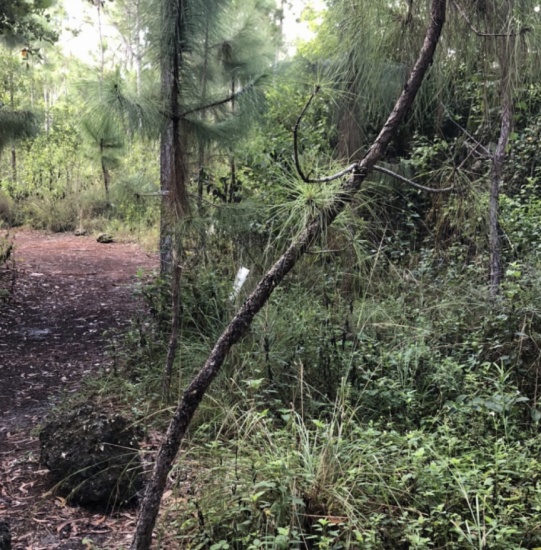

“ come from under logs and across streams all pointed in the same direction: the pool where they were born. In Braiding Sweetgrass, Robin Wall Kimmerer shares an example of how a fragmented habitat (which is divided by a highway) impacts a yellow-spotted salamander population: Trees along the (abrupt)edge of an agricultural field will experience more wind pressure, which could lead to die-back or stunted growth, even if they are established In the example of a new hole in the forest canopy, shade-loving plants that survived due to the protection of that tree may fail to thrive (sub-lethal implications) or die back (which could provide the perfect place for an invasive species to take hold!). Sensitive species may be dependent on the state of interior conditions for their survival. The extent to which a species is impacted by edge effect is sometimes referred to its sensitivity to habitat edges. And in fact, edges can be detrimental for certain species. – bull frogs along a pond edge, in areas where bull frogs are not native English ivy in American forests).

The above examples can also lead to colonization of a habitat by an invasive or noxious species (e.g. Not only is there no where for their prey to hide, they may also benefit from killed or injured animals that didn’t make it across unscathed. Some birds of prey use the edge agricultural fields, parks, and roads as a fruitful hunting ground (not to mention the raptors that have adapted to urban living!). A new hole in the canopy of a forest, because of selective logging or a tree falling because of natural causes, creates opportunities for other species to take hold. For example, frogs begin their life in water and, as adults, split their time between land and water. Soft edges can also be designed, and in the ecological restoration field these are often referred to as “buffer zones.” In soft edges, the edge effect can become the transitional zone, which allows an intermixing of species that can move readily between both environments. – the border between the High Plains and the Southern Rocky Mountains that makes up portions of Colorado’s Front Range or the banks of a pond) represent a gentler transition between two environments. This habitat has greatest amount edge exposure.Įdges are sometimes thought to create areas of higher biodiversity, which can be true for soft edges, like ecotones. Habitat C demonstrates the “peninsula” effect in varying degrees, which means that certain areas are fully impacted by the edge effect and other areas are less impacted. Habitat C is encroached upon (or is encroaching upon) a different habitat type (yellow)). This creates an edge effect (in black) that extends 10 meters on either side of the highway (represented by the dashed white lines) leaving the habitat fragmented and vulnerable to edge effects at each curve in the road as well as at the perimeter of the target habitat.

Habitat B, is discontinuous due to a meandering divided highway. The interior of the habitat is undisturbed. Habitat A has a relatively large area that has the least amount of impact due to edge effect (represented by the black outline). Edge effect impacts of fragmented habitats may extend further into target habitat.Īssume, for the image pictured, that each example of a specific target habitat (green) has an area of 100m 2 and that the edge effect for the target habitat is 10m. urban greenways or small areas of clear-cutting for ranching). Perhaps a less well-defined example is a fragmented habitat (such as those that occur because of selective logging or in areas impacted by human development (e.g. A clear example of this is when an agricultural field meets a forest. In ecology, edge effect refers to changes in a population or community along the boundary of a habitat.


 0 kommentar(er)
0 kommentar(er)
